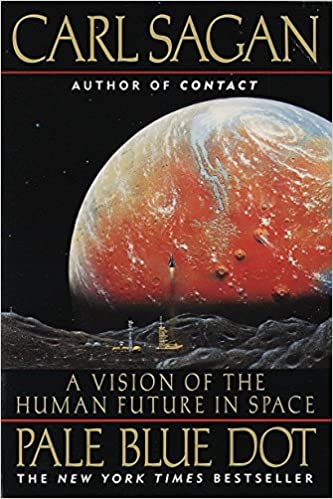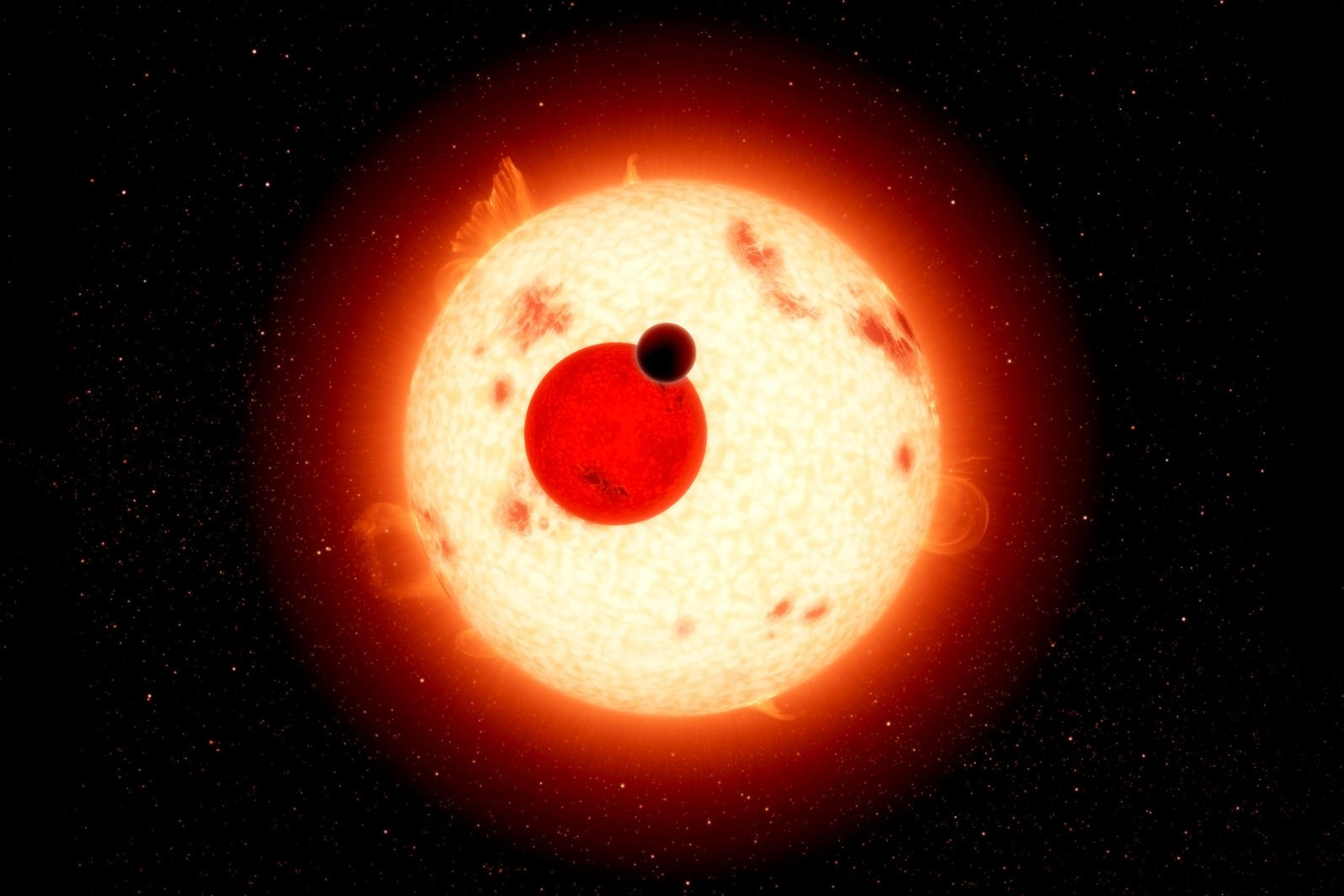Carl Sagan Institute: Who Can See Us From Outer Space?
Most exoplanets are spotted when they dim a star’s light while crossing it. Earth does the same thingWe’ve all heard of astronomer Carl Sagan’s pale blue dot (Earth from a billion miles away, 1990). But Jaimie Green reminds us at Slate that Sagan (1934–1996) also published a paper in 1993 that looked at Earth from that distance as if it were an exoplanet. What signals would prompt them to suspect life here?
That approach is still followed by astronomer and director Lisa Kaltenegger at Cornell University’s Carl Sagan Institute. One question is, where would an intelligent, technologically advanced civilization need to be to see us?

Kaltenegger and her collaborators used new data from the European Space Agency’s Gaia mission to figure out which stars have, have had, or will in the next 5,000 years have the right view to detect Earth in orbit around the sun—using the same technology that we today use to detect planets around other stars. Kaltenegger told me that part of her inspiration—aside from the new availability of this Gaia data—was to help guide future searches for extraterrestrial intelligence; SETI research looks for signals extraterrestrials might be beaming to Earth. She said, “In the ’60s,” at the dawn of SETI, “they started to think if we wanted to send a signal, we would send it to a place where we know there’s a planet. … And so then you reverse that viewpoint.” Who might be out there who knows the Earth is here?
Jaimie Green, “If the Earth Isn’t Special, Then the Whole Cosmos Is” at Slate (August 20, 2021)
The method that has scored the most successes so far in finding exoplanets (70%), Green tells us, is the “transit method,” which means viewing the planet as it dims a star’s light when it is right in front of the star in our field of vision. So far, we can tell the planet’s size and density but the hope is that the next round of new telescopes will also tell us about the planet’s atmosphere, which helps determine chances of life. Turning that around, ET civilizations could see Earth the same way. But then, how and when?:
With the latest Gaia data, Kaltenegger was able to deduce not only which star systems can detect the Earth’s transits right now, but who has been able to see us for the past 5,000 years, and who will for the next 5,000. Ross 128, a red dwarf star about 11 light-years from us known to have a planet just a bit bigger than ours orbiting in its habitable zone, first became able to see the Earth transit 3,000 years ago but lost that view around the year 1100. Kaltenegger said, “I started to wonder, if they’d seen a planet [a thousand years ago] and now all of a sudden, if there’s radio waves from the same part of the sky, would they put it together?”
Jaimie Green, “If the Earth Isn’t Special, Then the Whole Cosmos Is” at Slate (August 20, 2021)
It’s worth keeping in mind, however, that Earth doesn’t just happen to have life; it is exquisitely fine-tuned to have life. That means two things for our own research: We may find some but not all of the needed ingredients in the right order, composition, and action for life. Then the planet can be considered a near miss but it gives enough hope to keep looking. Alternatively, we may find a number of exquisitely fine-tuned planets (fine-tuned at Earth’s level), which may or may not be inhabited by intelligent, technologically advanced beings. That might be an unexpected argument for the existence of God.
You may also enjoy these accounts of why we do not see the aliens:
1.What if extraterrestrials can’t afford to take chances with us?
That’s the Dark Forest Hypothesis, riffing off the title of one of famed Chinese sci-fi author Liu Cixin’s novels. The Dark Forest Hypothesis assumes that we can use sociology to figure out what extraterrestrial intelligences might be like or might want. But can we?
2.Are the Aliens We Never Find Obeying Star Trek’s Prime Directive? The Directive is, don’t interfere in the evolution of alien societies, even if you have good intentions. Hence the Zoo hypothesis. Assuming the aliens exist, perhaps it’s just as well, on the whole, if they do want to leave us alone. They could want to “fix” us instead…
3.How can we be sure we are not just an ET’s simulation? A number of books and films are based on the Planetarium hypothesis. Should we believe it? We make a faith-based decision that logic and evidence together are reasonable guides to what is true. Logical possibility alone does not make an idea true.
4.Did the smart machines destroy the aliens who invented them? That’s the Berserker hypothesis. A smart deadly weapon could well decide to do without its inventor and, lacking moral guidance, destroy everything in sight. Extinction of a highly advanced civilization by its own lethal technology may be more likely than extinction by natural disaster. They could control nature.
5.Researchers: The aliens exist but they are sleeping… And we wake them at our peril. The Aestivation hypothesis is that immensely powerful aliens are waiting in a digitized form for the universe to cool down from the heat their computers emit.
6.Maybe there are just very few aliens out there… The Rare Earth hypothesis offers science-based reasons that life in the universe is rare. Even if life is rare in the universe, Earth may be uniquely suited to space exploration, as the Privileged Planet hypothesis suggests.
7.Does science fiction hint that we are actually doomed? That’s the implication of an influential theory, the Great Filter hypothesis, as to why we never see extraterrestrials. Depending how we read the Kardashev scale, civilizations disappear somewhere between where we are now and the advanced state needed for intergalactic travel.
8.Space aliens could in fact be watching us. Using the methods we use to spot exoplanets. But if they are technologically advanced, wouldn’t they be here by now? The Hart-Tipler conjecture (they don’t exist) is, of course, very unpopular in sci-fi. But let’s confront it, if only to move on to more promising speculations.
9.Is the brief window for finding ET closing? According to some scenarios (the Brief Window hypothesis), we could be past our best-before date for contacting aliens. Of course, here we are assuming a law of nature as to how long civilizations last. Can someone state that law? How is it derived?
10.What if we don’t see aliens because they have not evolved yet? On this view, not only did we emerge during a favorable time in the universe’s history but we could end up suppressing them. The Firstborn hypothesis (we achieved intelligence before extraterrestrials) lines up with the view that humans are unique but sees that status as temporary.
11.The aliens exist—but evolved into virtual reality at a nanoscale. That’s the Transcension Hypothesis, the latest in our series on science fiction hypotheses as to why we don’t see extraterrestrials.
On this view, after a Singularity the ETs become virtual intelligences, exploring inner space at an undetectably small scale.
12.Is intelligent life in the universe living in interior oceans of planets and moons? The Ocean Planets Hypothesis is that intelligent beings may flourish in the interior oceans of the moons of gas giant planets — or within exoplanets — but they are trapped there. If intelligent life forms are trapped in the interior oceans of rocky moons and planets, Earth is a special planet—much better suited to space exploration.
13.Is real-world space travel just too daunting for ET? That’s the Percolation Hypothesis as to why we don’t make contact with aliens. They can’t overcome the laws of physics, any more than we can. If there is a purpose behind the universe, maybe the aliens and we weren’t intended to meet. That’s worth considering, given the physics barriers.
14.The Aurora Hypothesis: ET could risk only rare contact with us. Given the difficulties and risks of space travel, extraterrestrials with advanced technology may have visited Earth only one in a million years, researchers say. After centuries of modern science, we are just now looking for fossil bacteria on Mars, not without risk. ET may be in the same position.
15.Data analyst offers 15 reasons extraterrestrials aren’t seen. He estimates that there should be 100,000 civilizations in our galaxy. Some of Yung Lin Ma’s suggested reasons are ones we had not considered before, including flow of time and communication differences.
